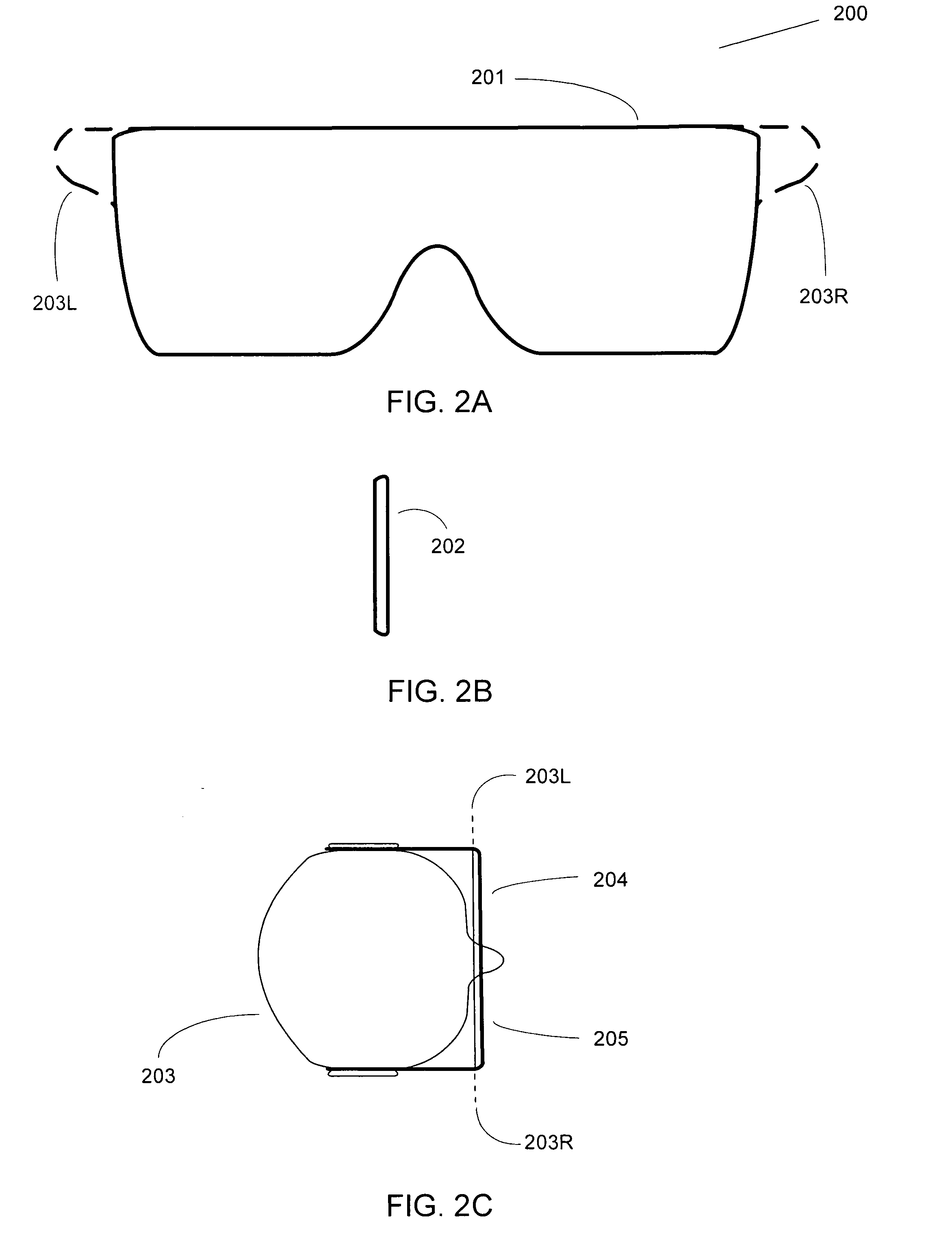3-D eyewear
a three-dimensional, eyewear technology, applied in the field of selection devices, can solve the problems of cumbersome and uncomfortable two-piece glasses, inconvenient viewing experience, and inconvenience of users' combination of eyewear
- Summary
- Abstract
- Description
- Claims
- Application Information
AI Technical Summary
Benefits of technology
Problems solved by technology
Method used
Image
Examples
Embodiment Construction
[0029] Reference will now be made in detail to the preferred designs of the invention, examples of which are illustrated in the accompanying drawings and tables. While the invention will be described in conjunction with the preferred designs, it will be understood that they are not intended to limit the invention to those designs. On the contrary, the invention is intended to cover alternatives, modifications, and equivalents, which may be included within the spirit and scope of the invention as defined by the appended claims.
[0030]FIG. 1A is a drawing of a pair of 3-D glasses 101 fabricated primarily from a relatively inexpensive material, such as cardboard or paper. Left temple piece 101 and right temple piece 102 are also shown. Front piece 104 includes a depression for the nose, and polarization filters 103L and 103R can be circular or linear, of various orientations and configurations, as is well understood in the art and described below.
[0031] Although this disclosure concen...
PUM
 Login to View More
Login to View More Abstract
Description
Claims
Application Information
 Login to View More
Login to View More - R&D
- Intellectual Property
- Life Sciences
- Materials
- Tech Scout
- Unparalleled Data Quality
- Higher Quality Content
- 60% Fewer Hallucinations
Browse by: Latest US Patents, China's latest patents, Technical Efficacy Thesaurus, Application Domain, Technology Topic, Popular Technical Reports.
© 2025 PatSnap. All rights reserved.Legal|Privacy policy|Modern Slavery Act Transparency Statement|Sitemap|About US| Contact US: help@patsnap.com



